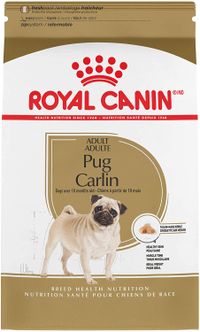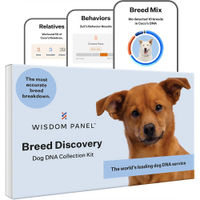Pugs: Breed profile
The class clowns of the canine world, pugs are devoted and doting, but the fun they bring is bundled with the need for a lot of care and attention

Pugs are fantastic companion animals, with an impish sense of fun and playfulness. Their soulful eyes, comical faces and contentedness to laze about have made them the perfect lap dog since 200BC. Originating in China like the Chow Chow, where they were bred to entertain Chinese emperors, their adoring and loyal nature has been charming pet owners from the days of the Han dynasty. After their introduction to Europe in the 1500s, they became favorites of royal households, including Queen Victoria, which ensured their popularity soon spread around the world.
They are affectionate but sedentary pedigree dogs, so don't expect them to guard or hunt – but if you are looking for a dog to entertain, you can't go far wrong with the silly antics pugs get up to. Weighing between 14 to 18 pounds, and standing at 10 to 14 inches tall, with their square, stocky frames and squished up faces, it is often said that they represent a lot of dog for their small size.
Do be warned though, these comical and often hilarious flat-faced dogs do come with their share of problems. The folds in their skin can cause breathing problems and make them prone to infections. And those delightful bulging eyes can put them at risk of blindness and other eye conditions as they get older. Because this means they need a lot of care and attention, they do better with owners who have the time to lavish them with the love and affection they are so happy to give and receive.
This hasn't stopped millions of people welcoming pugs into their families, though, and if you are prepared to spend the time to ensure they are physically and emotionally fit and well, the time invested will be paid back many-fold by these canine clowns. Read on to find out everything you need to know about these sweet-natured entertainers.
How much exercise do Pugs need?
Life expectancy: 12-15 years
Average weight: Male: 14-18lbs / 6-8kg
Female 14-18lbs / 6-8kg
About the same as: A five-month-old baby
Pugs do not need a lot of exercise, and in fact getting them to do what they need to do to stay in shape may be your biggest problem! They are happy to laze around indoors on the sofa resting on your lap while you watch the television, and this laid-back nature makes them perfect for apartment dwellers – so if you want a dog to accompany you on long walks, look elsewhere.
With no love of the great outdoors you may find it hard to get your playful pug to leave their beds, but they do need some daily moderate exercise. Be careful though, their scrunched-up faces and small nostrils mean they often find it hard to breath – and too much running about can cause them to suffer from suffer from Brachycephalic Obstructive Airway Syndrome. Also, their stocky frame means they can easily overheat or get too cold, so consider this when exercising them in the summer and winter months.
On days where the weather makes you worried about taking them outside, they can get their fill of exercise indoors with short bursts of play - like fetch. Get them off those comfy couch cushions by supplying them with a variety of the toys to play with, with particular emphasis on squeaky toys and balls small enough for them to be able to pick up in their small mouths.
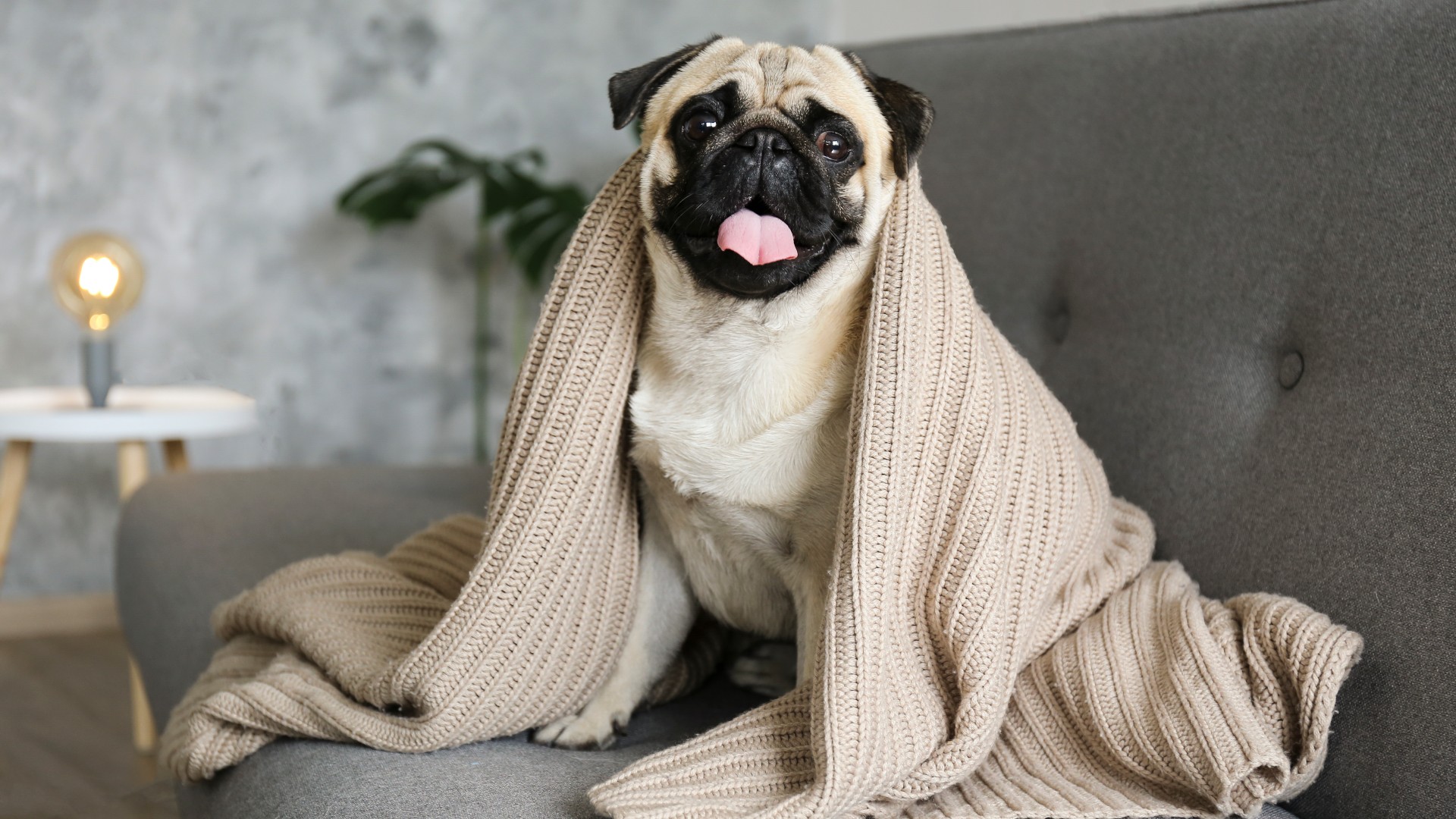
Are Pugs easy to train?
Suitable for: People who want a loyal and fun companion who will never leave their side
Not suitable for: Anyone who wants an active dog to explore the great outdoors with
Temperament: Playful, Loving, Attentive, Quiet, Sociable
Shedding: Heavy
Since Pugs are eager to please and love to be the center of attention, you shouldn't have too many problems training them – so long as they don't become distracted, that is. Experts suggest tapping them gently on the nose, saying “watch” and moving your finger to your nose to keep them focussed, then rewarding them with a tasty dog treat.
With their attention held, training them to follow basic commands then starts to become much easier, but one area where you may struggle more is housetraining. That is when Pugs are at their most stubborn, and it can take as long as a year to get them to control their bodily functions. This is made worse by the fact they are small and have less capacity in their bowel and bladder.
What do Pugs eat?
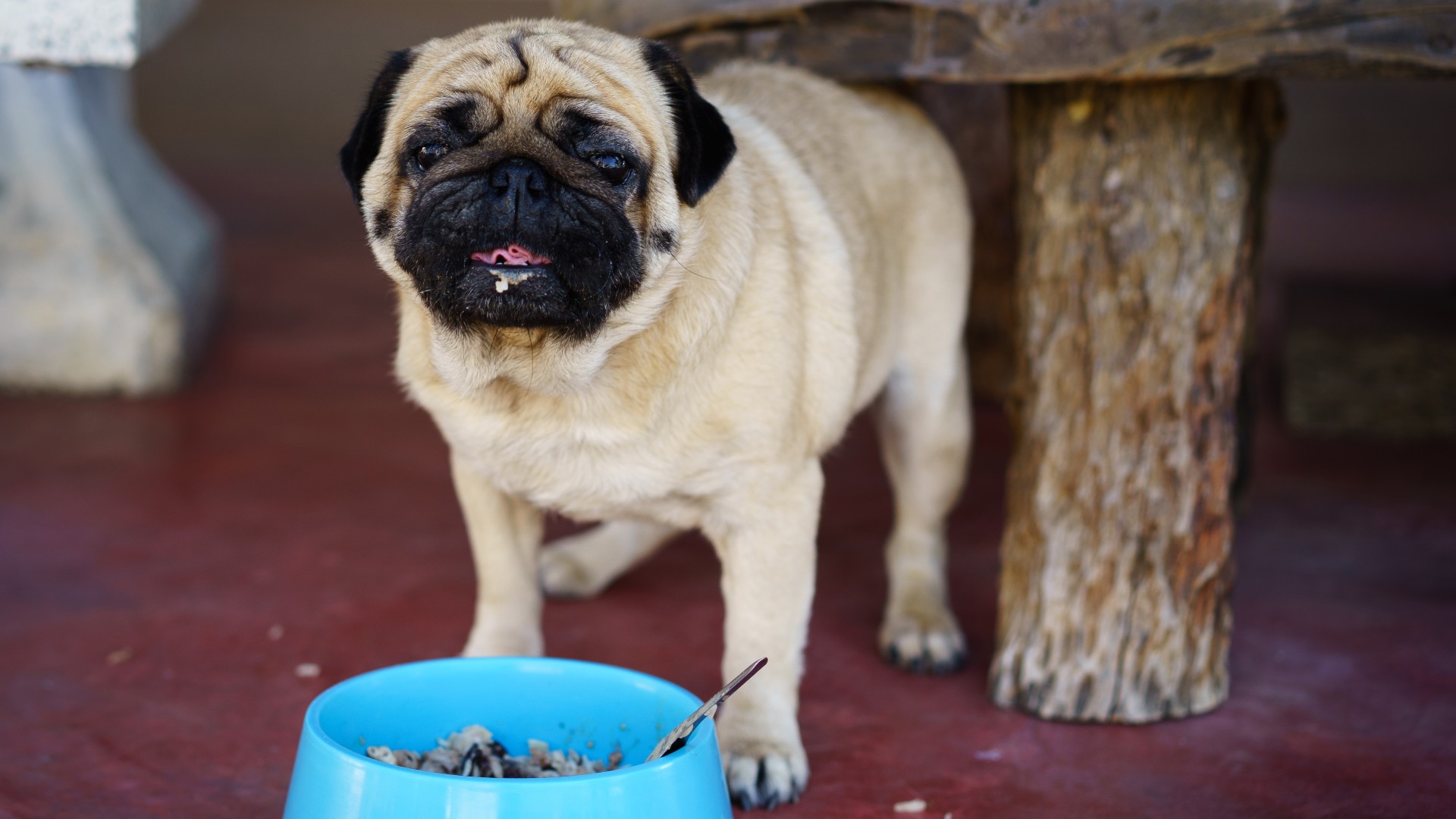
Give a Pug food and he'll eat it. Then continue eating. And eat some more. There's just no satiating a pug's desire to eat, so you have to be strict from the beginning because this breed can pack on some serious pounds if you're not careful.
The general advice is to give them between a half to a full cup of the best dry food containing the correct proportion of minerals, vitamins, calories, and trace elements spread over a couple of meals each day.
As always with small dogs, keep treats to a minimum and ensure those snacks are healthy. Try carrots, cucumber, green beans, strawberries, and raspberries for sweet treats that are also nutritious and low in calories.
Royal Canin Pug Adult Breed Specific Dry Dog Food | Amazon
Containing a balance of nutrients that have been specially formulated to support the health of a Pug's skin, this kibble is a winner for helping Pugs stay slim and maintain muscle tone. Designed to be easy to pick up, it also takes time to chew, preventing your Pug from gulping their food down.
The temperament of a Pug
Pugs love humans, so they are perfect companion dogs. They're a joy to have around the house, they get on well with other animals and children, and they don't need many hours of play, sleeping for about 14 hours a day.
They're not completely lazy, though. Although you're not going to have them fetching sticks and running with you in the park, Pugs are highly intelligent, happy, and loyal, and they'll get under your feet whenever you move around, essentially becoming your shadow.
When they do break free, they can have a real mischievous side to them, but it's hard not to fall in love with it. Known as the clowns of the canine world, Pugs love to show off and it’s not unusual for them to get themselves in trouble around the house when their curiosity gets the better of them.
Do Pugs shed a lot?
Amount Of Shedding: High
Easy To Groom: Yes
General Health: Good
Potential For Weight Gain: High
If you're going to welcome one of these cuties into your life then we recommend the first thing you do is arm yourself with one of the best vacuum cleaners for pet hair because trust us, you're going to need it!
You wouldn't think it to look at them, but a Pug's tightly-packed fur sheds year-round, and it likes to fly free pretty regularly in the summer months, especially for those that are double-coated.
Thankfully, it's not all bad news. A Pug's coat is easy to manage with regular brushing three times a week, and with a medium bristle brush or rubber grooming mitt at the ready, you'll make light work of the task.
Bathing is also useful, but do be sure that you dry a Pug properly to prevent infection within the folds. You should also regularly brush a Pug's teeth – adults have 42 of them crammed into their tiny mouth, so good dental health is important to prevent infections, gingivitis, and plaque build-up.
Wisdom Panel Breed Discovery DNA Kit | Amazon
Not sure exactly what breed your dog is? This kit screens for 365+ breeds – because knowing every detail about your dog helps you understand how best to care for them.
Pug health problems
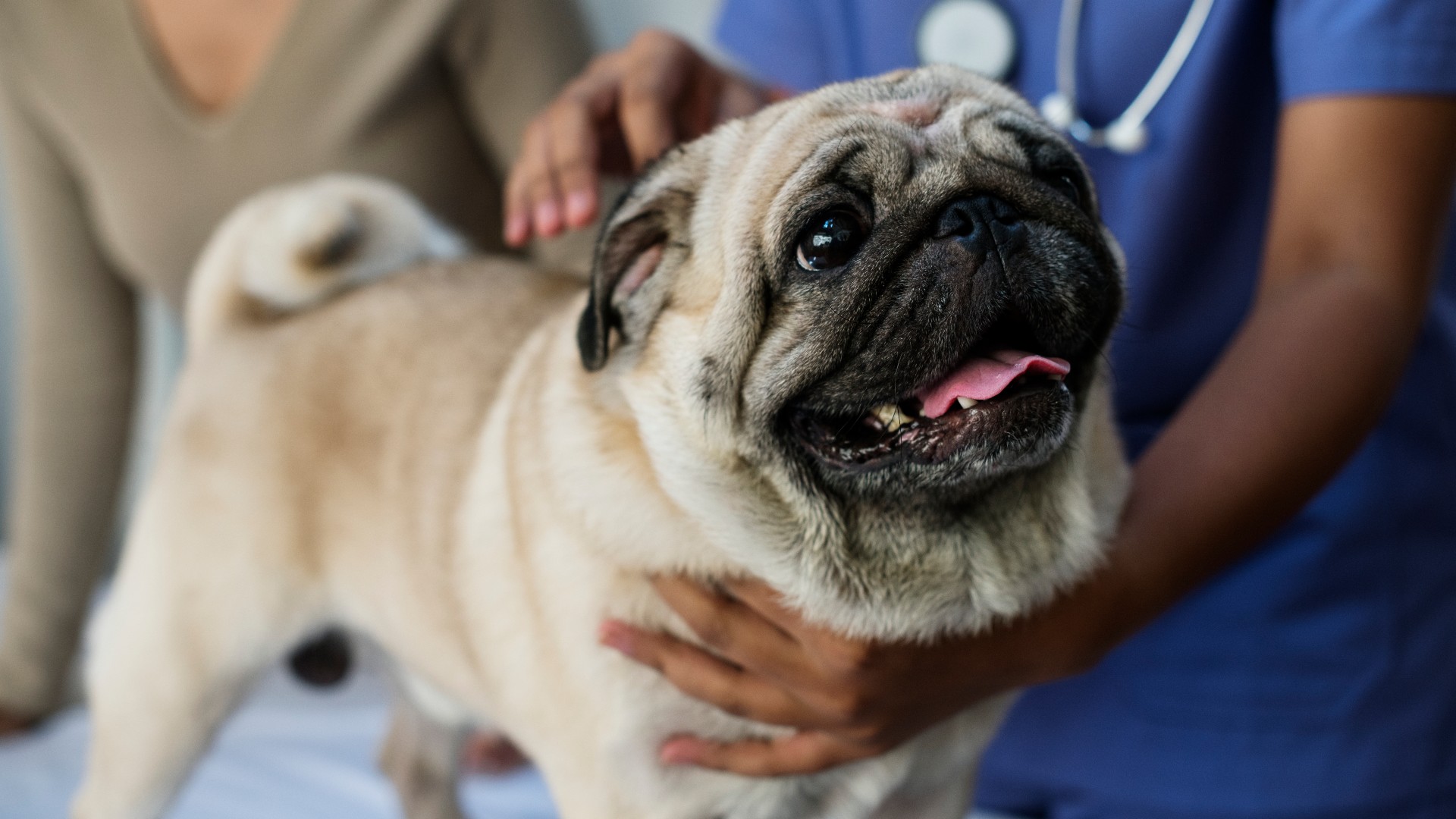
Pugs can suffer many genetic health issues, and you'll likely find yourself visiting the vets more often than you'd like.
We've already touched on some of the problems that Pugs tend to be susceptible to, such as breathing difficulties, and the risk of infection in between their folds of skin. But they are also prone to hip dysplasia, and many will suffer eye issues because their peepers are so prominent. Watch out for dry eye, corneal ulcers, and cataracts, particularly as they get older.
If the top of this fur-kid wasn’t enough of an issue, their tail also requires monitoring as it can be prone to fractures, and to top it all off, these little sweethearts are also prone to catching colds fairly regularly.
While it’s important to be aware of the issues a Pug will likely face in its lifetime, there’s plenty of good news with this breed too. With the proper love and care, Pugs can live for up to 15 years, making them the perfect choice for someone looking for a long-term companion.
Should I get a Pug?
Cute, charming, mischievous, and fun-loving, Pugs make the most wonderful companion animals. Laid-back and flexible, this breed is happy anywhere from the country to the city and gets along beautifully with children and other pets. Their hilarious antics will provide you with a frequent source of amusement and brighten up even the cloudiest of days.
That being said, there’s no getting around the fact that Pugs tend to suffer from a lot of health issues, which can make them a big commitment. They’re also natural couch potatoes and so are not ideal for anyone with an active lifestyle who wants a dog to hike or run with. Their snoring isn’t ideal for light-sleeping humans either. Other breeds to consider include the French Bulldog, the Pomeranian and the Chorkie.
If you’re content with a short stroll each day, can give a Pug plenty of care and attention, and love the thought of having a second shadow who will shower you with love and loyalty for all of their days, then the affectionate Pug could just be the perfect forever friend.
Want to learn more about this breed? Here are our favorite pug facts
PetsRadar Newsletter
Get the best advice, tips and top tech for your beloved Pets

David Crookes has been a journalist for almost 30 years and he has written for a host of magazines, newspapers, websites and books including the World of Animals Annual, BBC Earth, Live Science, The Independent and Tom’s Guide.
Born in England, he lives with two cats but he’s also keenly interested in the differences between the huge number of dog breeds – in fact, you can read many of his breed guides that he’s written in collaboration with vets here on PetsRadar.
With a lifelong passion for technology, too, he’s always on the lookout for useful devices that will allow people to keep their pets happier and healthier, and provide them more time to spend together.
David has a degree from Durham University, as well as postgraduate diploma in journalism from the University of Central Lancashire.
